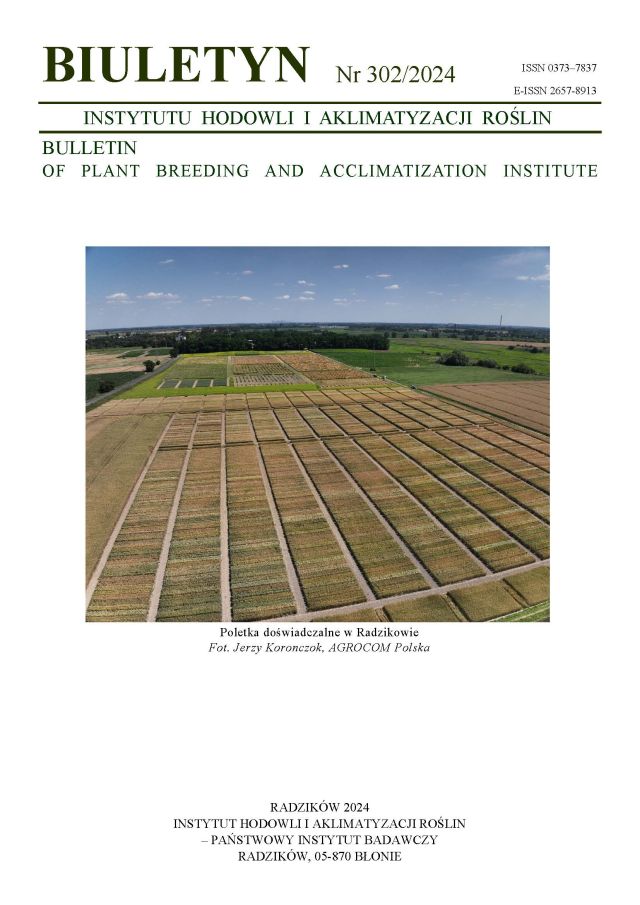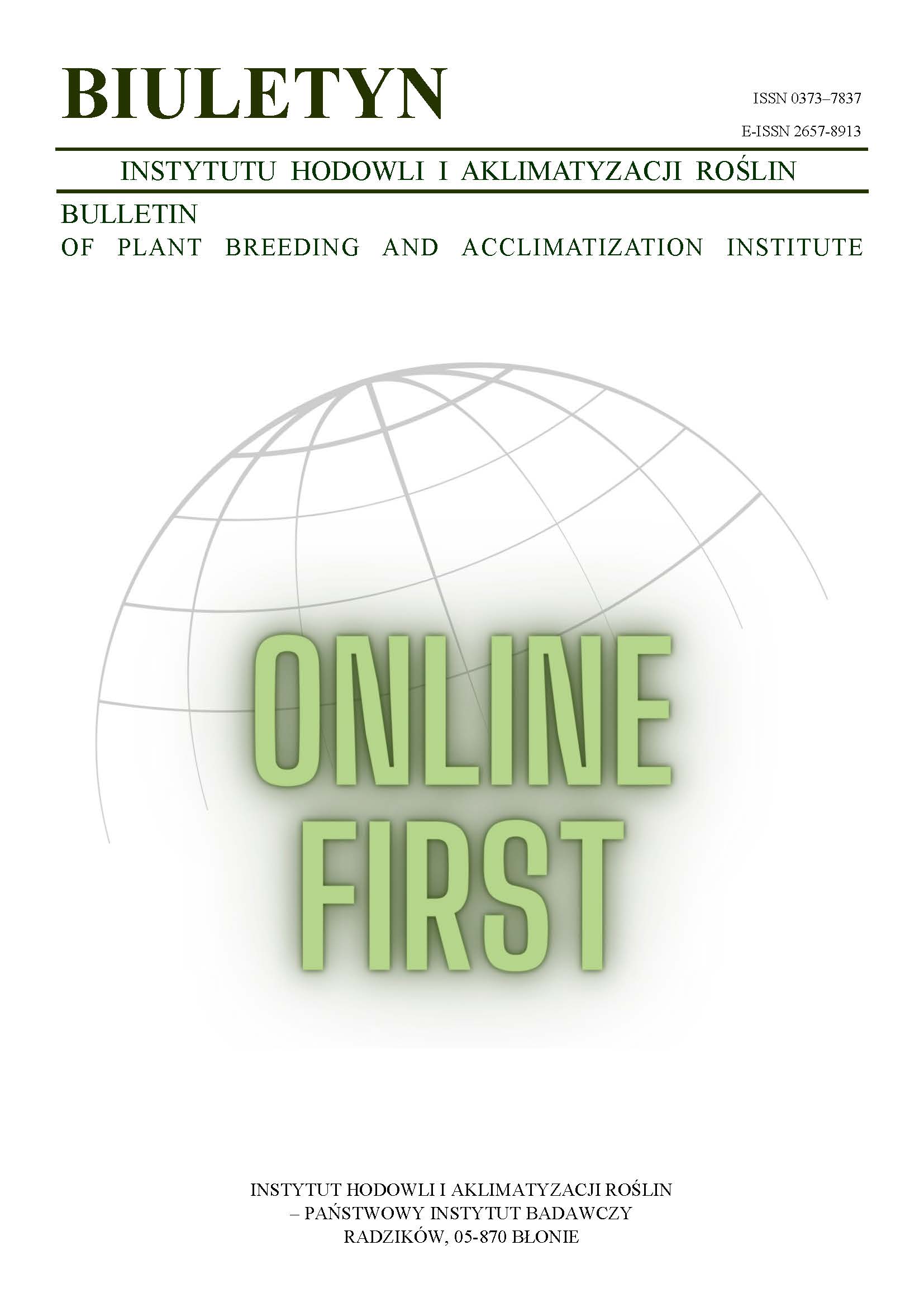Biological and natural conditions of potato seed production in Poland
Michał Kostiw
m.kostiw@ihar.edu.plZakład Nasiennictwa i Ochrony Ziemniaka w Boninie, Instytut Hodowli i Aklimatyzacji Roślin w Radzikowie (Poland)
Abstract
The decreasing number of viruses’ sources and growing spatial isolation between seed plantations, resulting from the decrease of potato cultivation area, are the conducive factors. On the other hand, recent registration of numerous cultivars susceptible to viral diseases and earlier spring migration of some aphid species (the vectors) augment the danger of viral infection at early growth stages.
Keywords:
aphids, biological and natural factors, potato seed production, virusesReferences
Chotkowski J., Rembeza J. 1999. Kierunki przekształceń w nasiennictwie w aspekcie wzrostu konkurencyjności rolnictwa. Biul. IHAR 210: 13 — 20.
Google Scholar
Gójski B. 2000. Sytuacja w nasiennictwie ziemniaka w Polsce z perspektywy przystąpienia do Unii Europejskiej. Wieś Jutra 3 (20): 5 — 6.
Google Scholar
Kostiw M. 2002. The spread of PVY, PVM, PVS and PLRV at Bonin conditions during 1996–1999. J. Plant Protection Res. Vol. 42, No.2.
Google Scholar
Kostiw M., Robak B. 2003. Selected issues concerning the ecology of green peach aphid (Myzus persicae Sulz.) on potato crops. Journal of Plant Protection Res. Vol. 43, No. 4: 325
Google Scholar
Authors
Michał Kostiwm.kostiw@ihar.edu.pl
Zakład Nasiennictwa i Ochrony Ziemniaka w Boninie, Instytut Hodowli i Aklimatyzacji Roślin w Radzikowie Poland
Statistics
Abstract views: 15PDF downloads: 9
License
Copyright (c) 2004 Michał Kostiw

This work is licensed under a Creative Commons Attribution-ShareAlike 4.0 International License.
Upon submitting the article, the Authors grant the Publisher a non-exclusive and free license to use the article for an indefinite period of time throughout the world in the following fields of use:
- Production and reproduction of copies of the article using a specific technique, including printing and digital technology.
- Placing on the market, lending or renting the original or copies of the article.
- Public performance, exhibition, display, reproduction, broadcasting and re-broadcasting, as well as making the article publicly available in such a way that everyone can access it at a place and time of their choice.
- Including the article in a collective work.
- Uploading an article in electronic form to electronic platforms or otherwise introducing an article in electronic form to the Internet or other network.
- Dissemination of the article in electronic form on the Internet or other network, in collective work as well as independently.
- Making the article available in an electronic version in such a way that everyone can access it at a place and time of their choice, in particular via the Internet.
Authors by sending a request for publication:
- They consent to the publication of the article in the journal,
- They agree to give the publication a DOI (Digital Object Identifier),
- They undertake to comply with the publishing house's code of ethics in accordance with the guidelines of the Committee on Publication Ethics (COPE), (http://ihar.edu.pl/biblioteka_i_wydawnictwa.php),
- They consent to the articles being made available in electronic form under the CC BY-SA 4.0 license, in open access,
- They agree to send article metadata to commercial and non-commercial journal indexing databases.
Most read articles by the same author(s)
- Michał Kostiw, Kazimierz Jabłoński, The impact of nitrogen fertilization on the tuber yield and quality of table potato varieties cultivated on medium soil , Bulletin of Plant Breeding and Acclimatization Institute: No. 267 (2013): Regular issue
- Michał Kostiw, Seed potato in Poland: natural, varietal and market conditions , Bulletin of Plant Breeding and Acclimatization Institute: No. 268 (2013): Regular issue
- Michał Kostiw, Barbara Robak, Infection pressure of PVY, PVM, PVS and PLRV in the period 2006–2008 in Bonin , Bulletin of Plant Breeding and Acclimatization Institute: No. 256 (2010): Regular issue
- Michał Kostiw, Infection pressure of PVY, PVM, PVS and PLRV in the years 1989–1992 and 1996–2000 under conditions of northern Poland , Bulletin of Plant Breeding and Acclimatization Institute: No. 233 (2004): Regular issue














